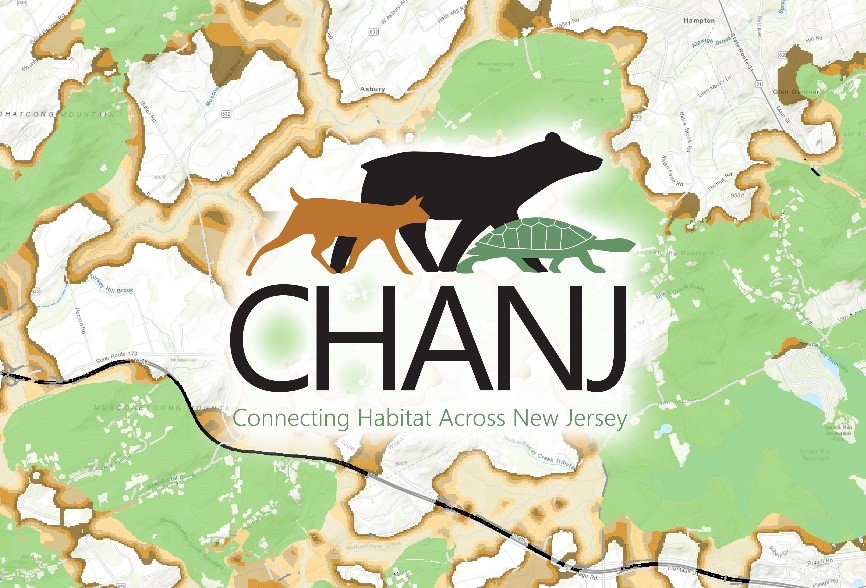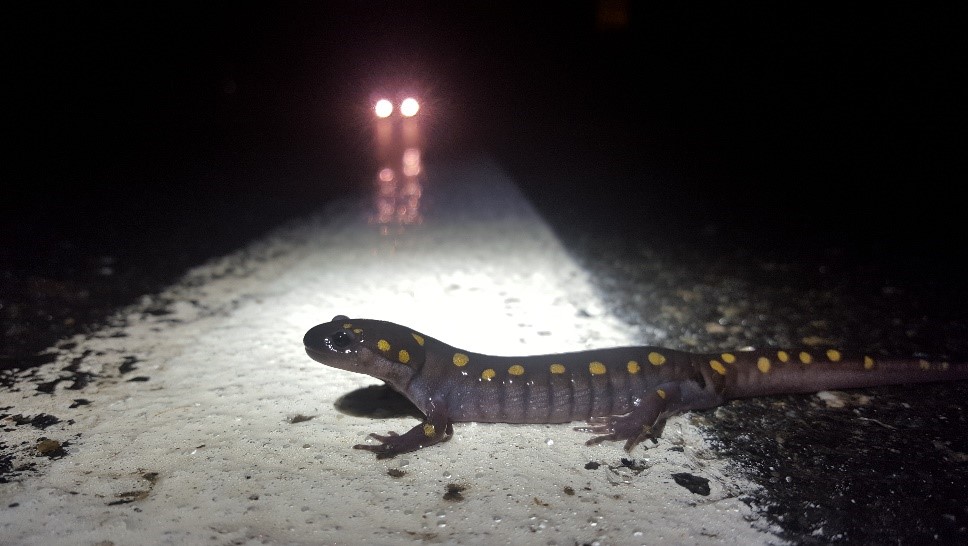DEP LAUNCHES CONNECTING HABITAT ACROSS NEW JERSEY PROJECT TO
LINK LANDS FOR WILDLIFE MOVEMENT
(19/P034) TRENTON – A new project to make New Jersey’s landscape and roadways friendlier to wildlife seeking food, shelter, mates and other needs is underway to help sustain healthy populations of various species, the Department of Environmental Protection announced.
“Here in New Jersey, urbanization and roads have made a patchwork of our natural lands, putting the connectedness of habitats and wildlife populations in jeopardy,” DEP Commissioner Catherine R. McCabe said. “The Connecting Habitat Across New Jersey project offers new tools to help secure and restore habitat connectivity across the state, giving wildlife the ability to meet all their needs now, and to adapt as best they can to a changing climate.”
 CHANJ, pronounced “change,” is administered by the Endangered and Nongame Species Program within the DEP’s Division of Fish and Wildlife. More than 40 partner groups have provided input on the project during the past several years.
CHANJ, pronounced “change,” is administered by the Endangered and Nongame Species Program within the DEP’s Division of Fish and Wildlife. More than 40 partner groups have provided input on the project during the past several years.
The statewide CHANJ Mapping tool highlights New Jersey’s remaining intact habitats, called "Cores," and the best opportunities to link them, called "Corridors." It also identifies road segments that cut through habitats and are likely to pose problems for animal movement. The mapping is available via an online CHANJ Web Viewer where land managers, transportation planners, conservation groups, and the general public can visualize their place in New Jersey's habitat connectivity puzzle.
A companion Guidance Document can help users make strategic choices about preserving land, restoring habitat and mitigating the impacts of roads on wildlife.
At least 127 terrestrial wildlife species in New Jersey may benefit from the CHANJ vision, including 82 Species of Greatest Conservation Need such as the bobcat, blue-spotted salamander and northern diamond-backed terrapin, whose populations are low or declining and in need of conservation. Numerous aquatic organisms, as well as plants, will also benefit from a more connected landscape.
 “New Jersey has done an excellent job protecting and preserving natural spaces thanks to strong conservation partnerships and steadfast public support,” said Division of Fish and Wildlife Acting Director Dave Golden. “Now, Connecting Habitat Across New Jersey gives us a literal roadmap for focusing our efforts ahead, filling in the gaps, and securing a legacy of healthy, connected ecosystems for the future.”
“New Jersey has done an excellent job protecting and preserving natural spaces thanks to strong conservation partnerships and steadfast public support,” said Division of Fish and Wildlife Acting Director Dave Golden. “Now, Connecting Habitat Across New Jersey gives us a literal roadmap for focusing our efforts ahead, filling in the gaps, and securing a legacy of healthy, connected ecosystems for the future.”
Though its major tools are just now being released, CHANJ has several accomplishments and ongoing projects. Two wildlife tunnel projects have been installed to help animals such as turtles and salamanders cross roadways at major roadkill hot-spots, and a third project is in the design phase. Trained surveyors are evaluating below-road stream culverts and rating how well aquatic and land-based animals can move through them, so that improvements can be targeted in the most needed places.
In addition, a statewide gene flow study is using DNA from roadkill to determine whether various mammal populations -- from deer to foxes to squirrels -- are becoming more isolated from each other due to landscape fragmentation.
“With our climate changing it’s hard to predict the future habitat needs of our wildlife species,” said Eric Olsen, Director of Land Programs for The Nature Conservancy in New Jersey. “We’re especially excited that CHANJ can help scientifically prioritize where to focus our efforts to connect habitats and decrease wildlife mortality.”
To learn more about CHANJ and its related projects, visit CHANJ.nj.gov. Email questions to CHANJ@dep.nj.gov.
Information about the threats to wildlife and actions to conserve them is detailed in New Jersey’s Wildlife Action Plan.
To support the Endangered and Nongame Species Program’s work on behalf of imperiled wildlife across New Jersey, consider purchasing a Conserve Wildlife license plate or marking the “checking-off for wildlife” on your New Jersey tax return.
Follow the DEP on Twitter @NewJerseyDEP.
###